


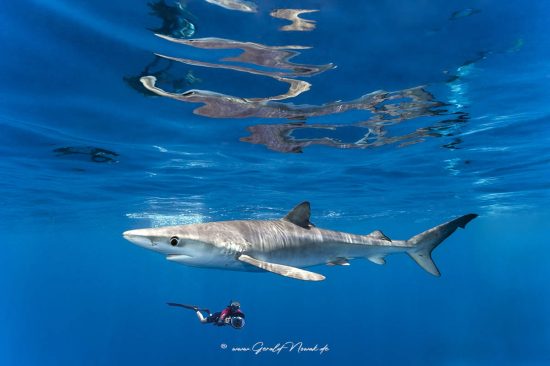
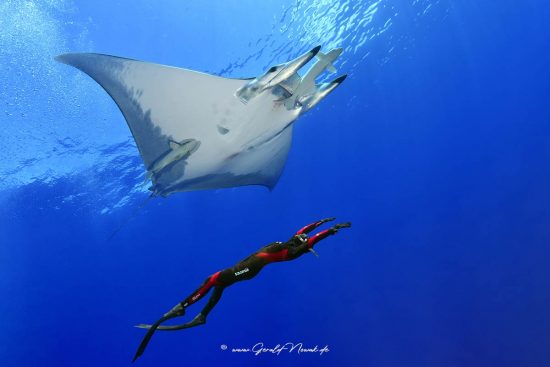
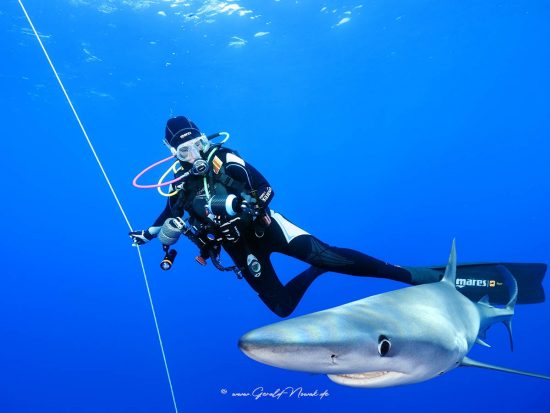
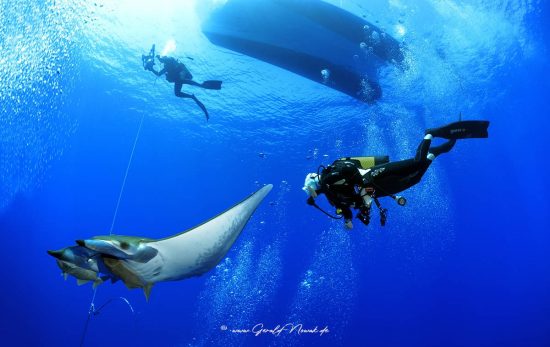
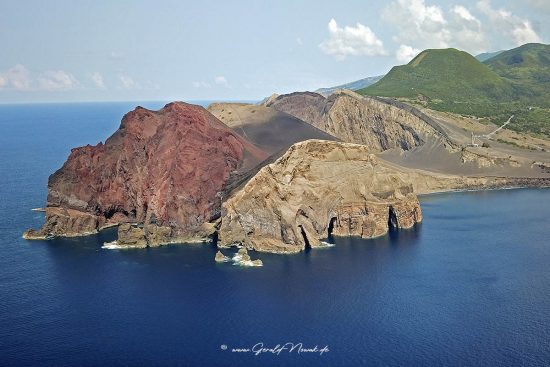
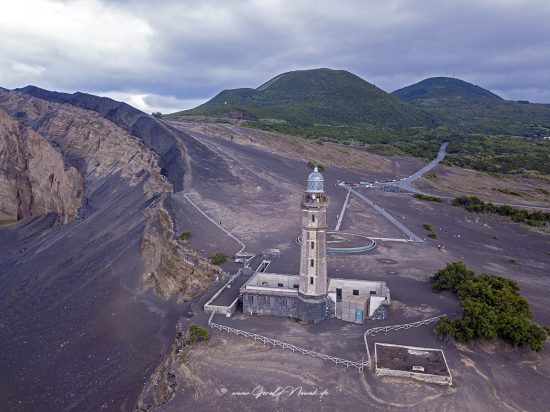
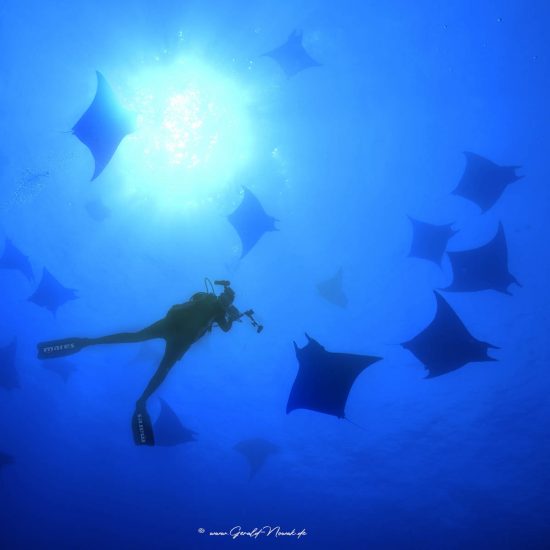
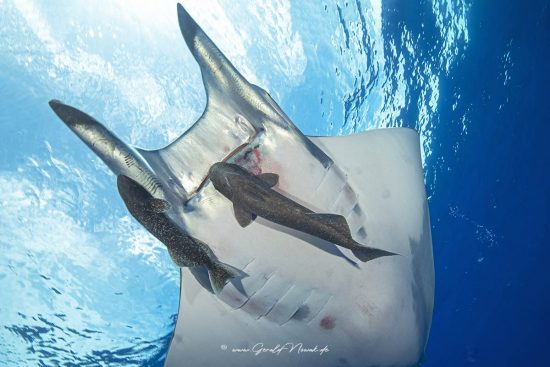
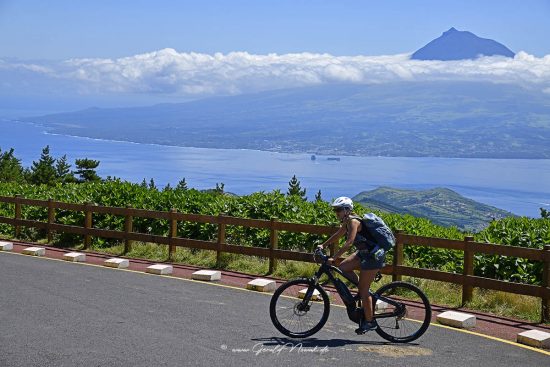
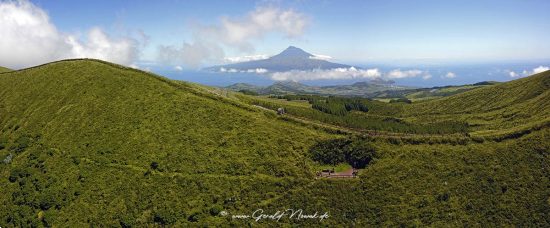
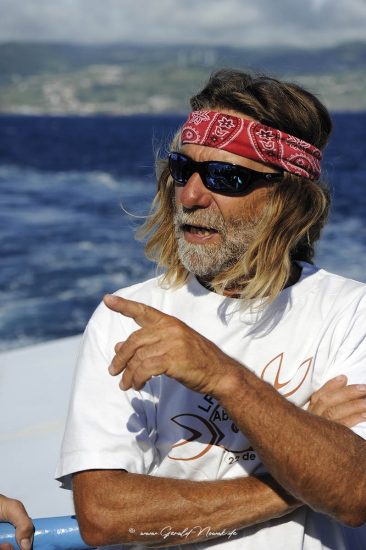
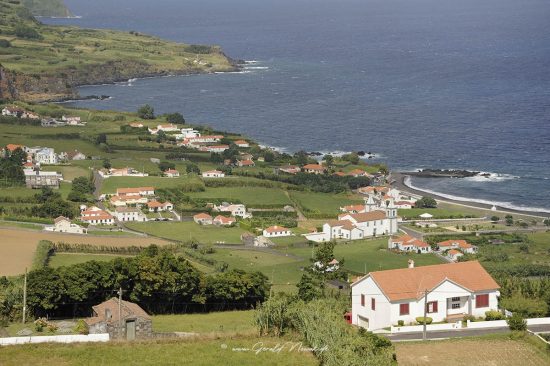
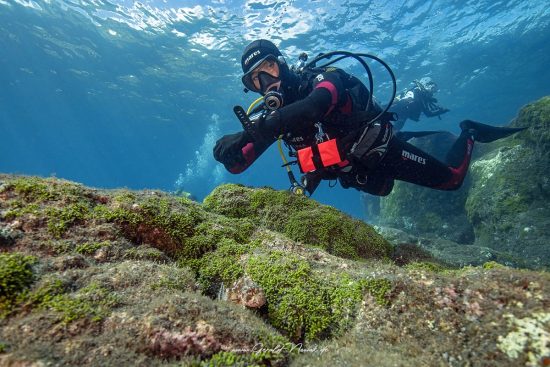
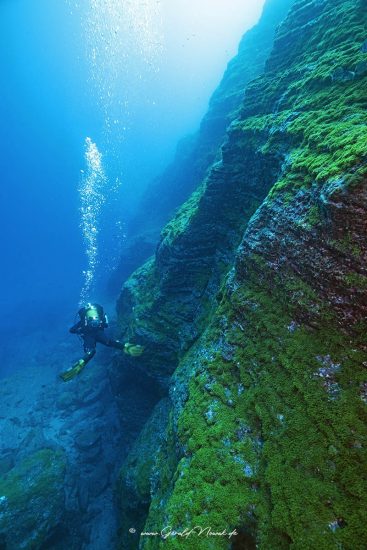
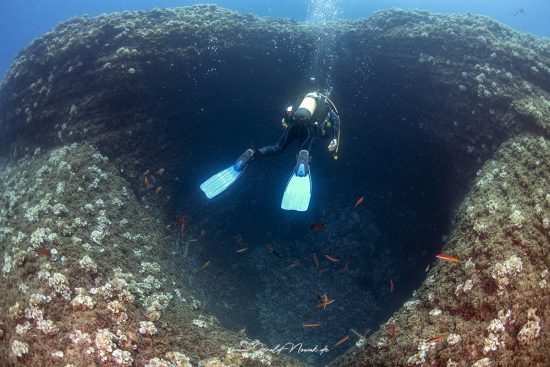
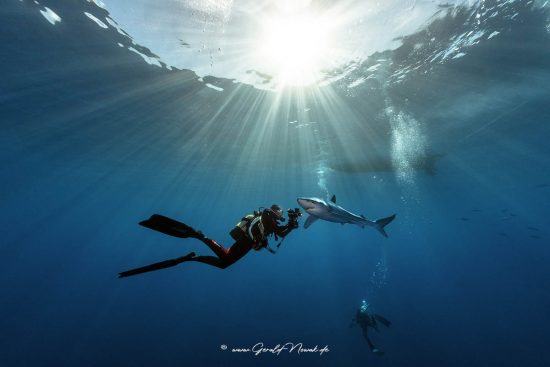
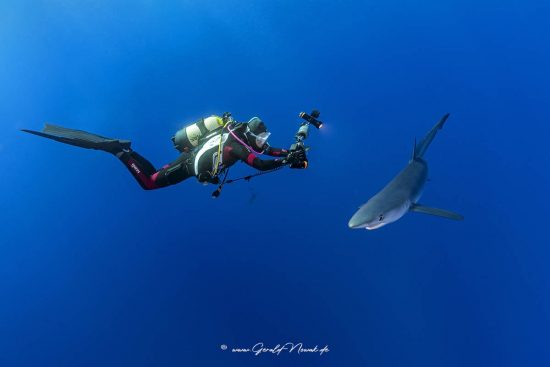
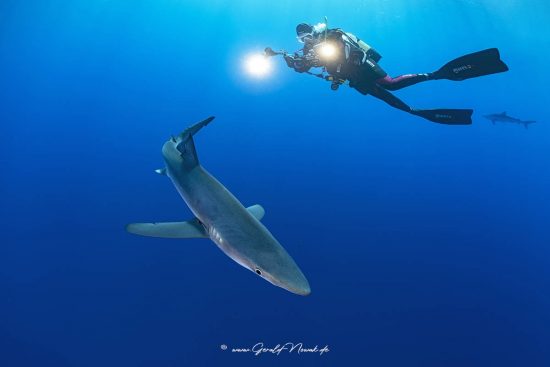
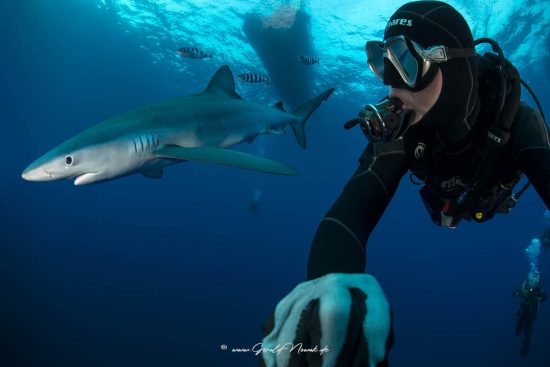
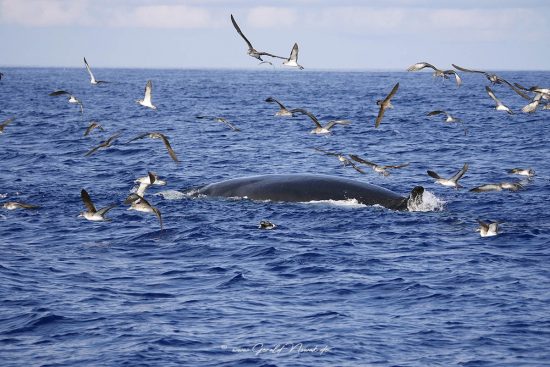
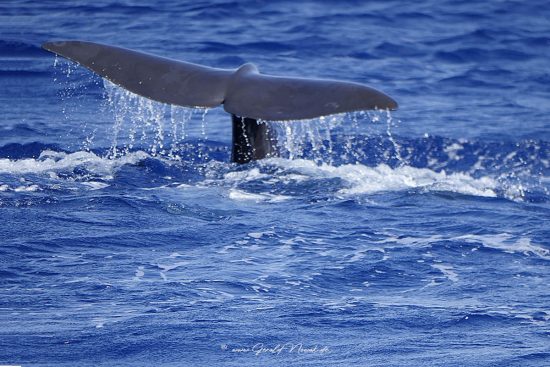
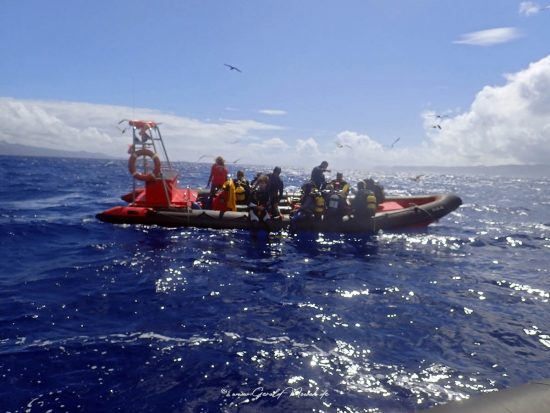
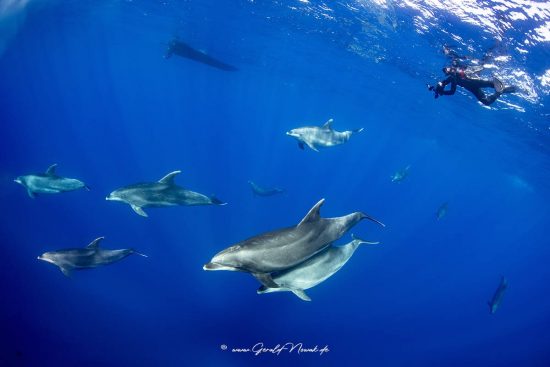
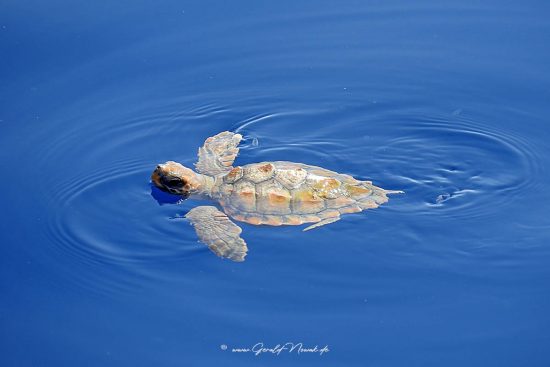
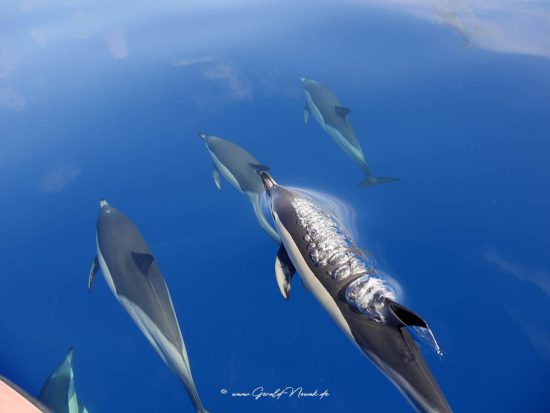
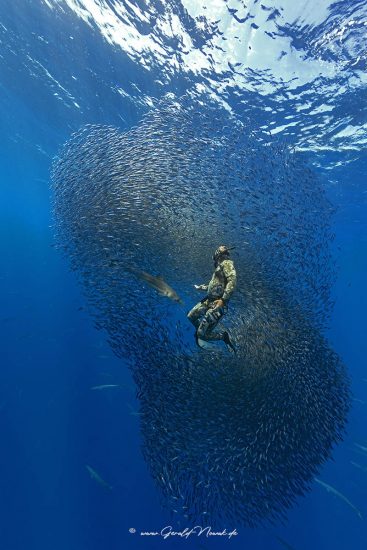
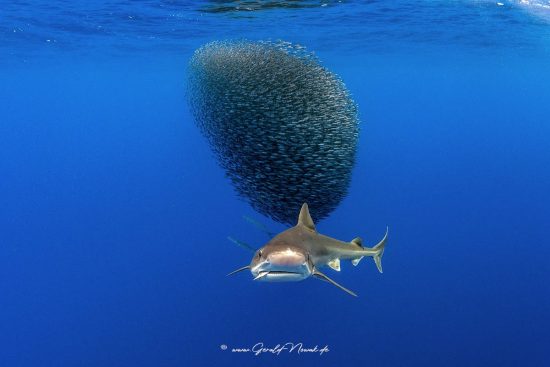
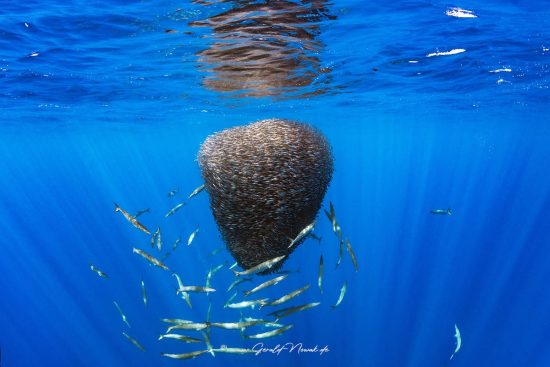
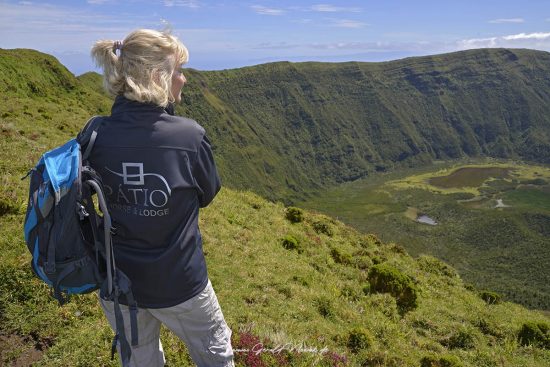
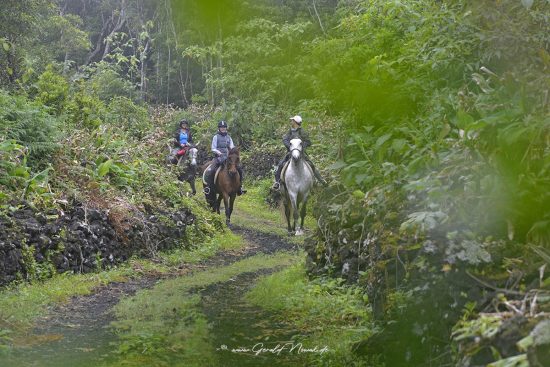
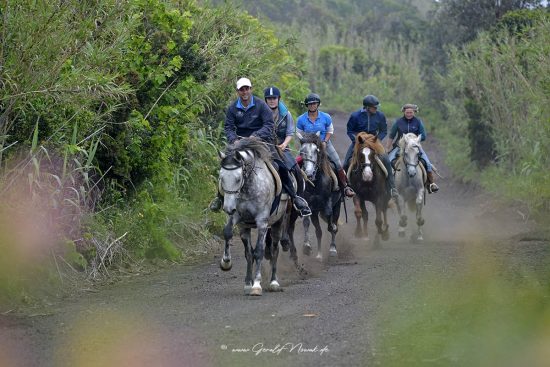
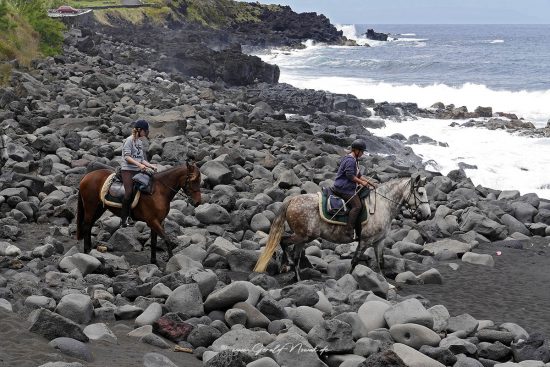
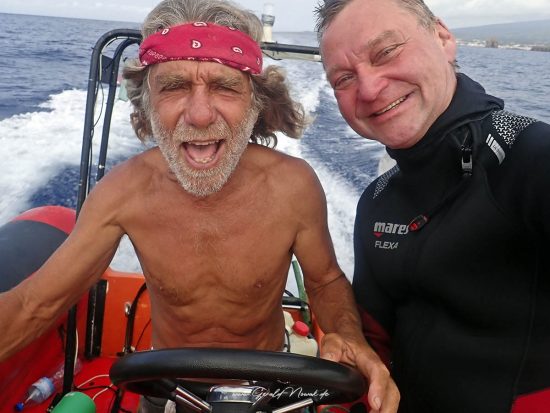
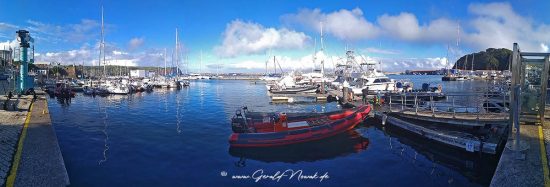
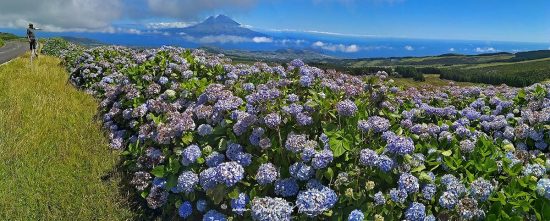
"May the god of the sea spoil you with happiness and let a mighty school of fish slide over your course."
The inhabitants of the Azores have lived by and worked with the sea for centuries, always on the hunt for rich prey. Today, we are also on the hunt - the photo hunt. The hunt for large schools of fish. As with every year, I'm with friends in the Azores. In the past, I have been diving with Princess Alice Mobulas and shy blue sharks in the open Atlantic. This year, however, Norberto Divers guides have discovered a new attraction: 'baitballs'.
Schools of fish show us how they manage to survive in the vastness of the open ocean. Many fry have developed an idiosyncratic strategy. When a hunter comes near them, they form dense packs that create the illusion of being a single large organism, however, their enemies are not usually fooled by this. On the contrary, this particularly attracts specialized hunters, which is why they are called 'baitballs'. Off the coast of the Azores we encounter countless schools of these juvenile fish, which are driven to the shore areas of the islands by currents.
There are schools of juvenile fish everywhere in the sea. They can swim against the current and are not helplessly exposed to it like plankton, but they are still pushed forward by the continental currents and thus get into the danger zones on the coasts. Not only do large pelagic fish lurk here, the numerous coastal hunters also hunt them here. In front of Faial, barracudas are already waiting for the young fish to pass by. If a school of baby fish is discovered by barracudas, they circle the small fish, which immediately huddle tightly together. It is difficult for the hunter to spot a single fish in the dense crowd of the school, nevertheless, they try again and again, attacking the ball with their mouths wide open. They do not always succeed, and many an attack ends unsuccessfully.
Once the baitball is surrounded below the water's surface, other hunters immediately join in. Yellow-billed shearwaters attack from above, shooting into the water like arrows, similar to gannets. Not as deep as their fellows, but still deep enough to catch prey. Sharks join in from below. Here off the coast of Faial there are small, nimble dogfish sharks. We observed them for the first time off the Azores as they are very shy sharks. In hunting mode they forget their shyness and live up to their name. Like small yapping dogs they shoot towards us, turn and race back into the vastness of the ocean. In order to be able to follow the swarm quickly and agilely, we are on our way with ABC equipment. With heavy diving equipment this would be too laborious. The shoal and its hunters are directly on the surface.
As soon as we leave the boat, the small sharks immediately come to inspect us. Some of them nudge or buck, one even tries a 'test bite' of our fins, however, it's just a squeeze, without too much pressure. After a short time the sharks have got used to us and they occupy themselves with the bait again, which is already trying to flee. The barracuda prevent them again and again.
In order to cause as little unrest as possible, we take turns to swim near the shoal of fish. Fabio, our local guide, tries to dive through the shoal and almost collides with a shark that had not seen him in the dense pack of fish. The shark immediately turns away.
After a few minutes, the barracudas disappear, dispersing their shoal. The young fish disappear in seconds from our field of vision. Even long apnea fins are of little use here, because the fish are simply faster. Only skillful hunters like the barracuda have the baby fish under control.
This is a natural phenomenon that one would rather expect to see in South Africa at the so-called Sardine Run, but in South Africa there are always dozens of boats in the way, despite the often very poor visibility. Here we have the sea to ourselves, the water is crystal clear, but the baitballs are much smaller. In South Africa they are sardines, here they are Longspine snipefish (Macroramphosus scolopax), but the Azores have so much more to offer! Not only the well-known blue shark diving or the Mobula schools of Princess Alice. The underwater formations around the islands are also extraordinary. In the channel between Faial and Pico there are shoals whose structures in the rocks still clearly show volcanic activity. Deep round holes, sharp-edged break-offs and box-like formations are visible everywhere.
The main attraction of the Azores, however, are the large pelagic hunters. They follow the schools of fish that follow the nutrient-rich plankton. This flow is brought on by the deep current of the Azores. It is part of the Gulf Stream and carries warm surface water from the Caribbean to the northeast. The current running along the surface also pulls cool deep water behind it, which is sucked upwards. The turbulence causes strong waves at the surface and cool deep water currents directly on the coast. Divers on the coast sometimes experience temperature changes of five to eight degrees during a dive, however, the cool deep water also carries very nutrient-rich plankton. This is one reason why the mobulas and large schools of fish at Princess Alice Bank stay there practically constantly.
Blue sharks travel great distances through the Atlantic and are not really site-faithful. Nevertheless, there are places where they are more likely to be seen. At various "shoals" in the Azores, the pelagic fish linger to hunt and fortify themselves for the rest of their journey. Often, they are only present for a limited period of time. This can mean a few days, but also weeks. If they are not fished during their journey through the Atlantic, they will come back. In the Azores, there are several places where they can be seen. To see them, however, they must be lured from the depths, because blue shark stay in so-called "banks" which are mostly found at more than 100 meters deep. Blue sharks are very shy animals, you have to win their trust first. If a shark is at the baitball you have to give it a little time. Jumping too euphorically from the Zodiac will scare them away. Also, under water, they need to take a few minutes before approaching divers. If they trust that the divers do not present a danger to them, they will come closer. If a diver stays calm, they will swim within centimeters of the them. Aggressive behaviour, like their colleague the "Longimanus" from the Red Sea, is not common for them, even if they may sometimes nudge a diver. There have never been any bite injuries, which is probably due to the fact that they are not fed and therefore not used to humans.
On almost all boat trips you can see dolphins and occasionally whales. There are 28 species of dolphins and whales living in the Azores. Some can be seen all year round, others just pass by on their way to hunting grounds rich in fish. You may enter the water with the dolphins when they pass in front of the boats. For the whales, you need a special permit that is only given to biologists, photographers or filmmakers. These activities in the Azores are still in their early stages and we will probably discover many new things in the coming years. Hopefully we will stop fishing the sharks of the Atlantic so that encounters with these great animals are still possible for future generations.
Info for the Azores:
Arrival
Unfortunately to get to the island there is only one available airline, SATA, which operates under Azores Airlines. SATA works together with code-sharing partner TAP, which makes connections from all over Europe possible.
Accomodation:
In the Azores there are hotels, apartments and private accommodation available. Prices vary from 35 to 120 euros per person per night. The most beautiful place to stay on Faial is in the old district, "Porto Pim". Here there are only apartments and private accommodation available.
Restaurants / Bars:
The Portuguese love to live and enjoy themselves. There are more bars than restaurants, but it is possible to eat everywhere. In local bars a beer costs no more than 1.50 euros and a coffee can be had for one euro. In tourist restaurants the offer is much more expensive.
Food & Drink
The cuisine is similar to that on the mainland. Rabbit and crayfish are specialties of the Azores. The local wines and brandies are recommended.
Shopping
Small stores and bakeries can be found on every corner. There is only one large supermarket in Horta, but the offer becomes more extensive and better from year to year. Fresh goods are available depending on the season. You should not expect to get everything the same as on the mainland except beer, that is always enough available!
Trail riding
Horse lovers will love the Azores. The Patio Ranch is located in the northwest of Faial. They offer day and multi-day tours all over the island. Out and about on winding paths, galloping on the beach or enjoying the view from the crater rim of the volcano.
Hiking
Countless hiking trails lead across the island. There are countless hiking trails that you can explore on your own, explore the caldera with a hiking guide or climb the highest mountain in Portugal, the Pico. Everything is possible on Faial and Pico.
Travel time
The Azores are always worth a trip due to the mild climate of the Gulf Stream. From June to September the sea is relatively warm (20-24 degrees) and blue. Also, during this time, the sun shines almost predominantly, although short showers are always possible. The Pico volcano, on the island of the same name, captures the humidity, which then rains down on the slopes.
Sports
All water sports can be practiced. Trekking, biking and also small climbing tours are possible. Some hotels have tennis courts, you can also play golf.
Rental cars
Small cars are available from 35 euro per day
Diving with Norberto Diver
Norberto Diver, Marina da Horta, 9900-018 Horta, Faial (Azores)
Estimated total price: 1 week per person from 1,500 euro, plus flights/taxes
Other dive centres in Faial: Dive Azores - Haliotes
 Gerald
Gerald 12th July 2021
12th July 2021